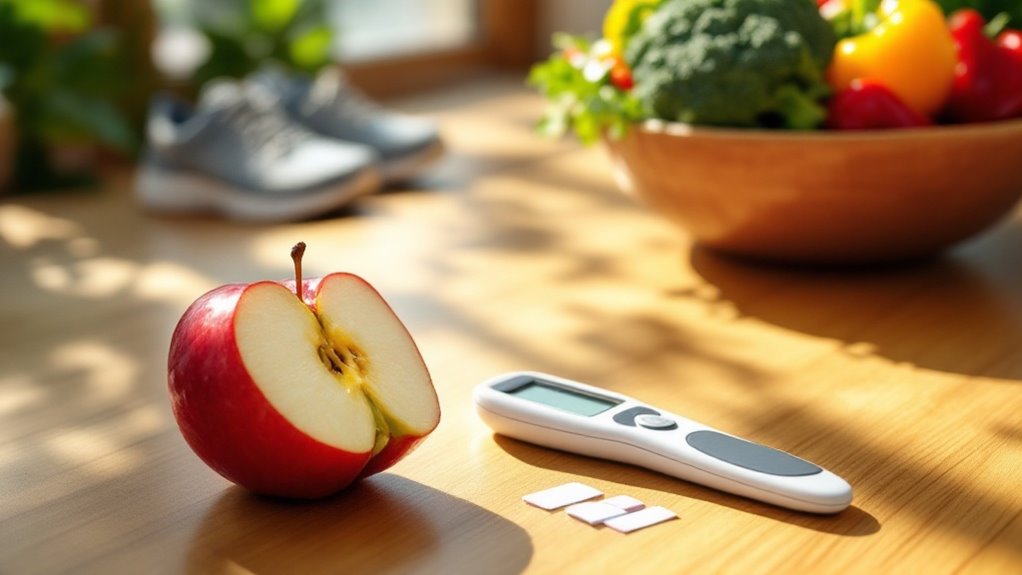Prediabetes lurks in nearly 40% of Americans, a silent metabolic ambush waiting to strike. This sneaky condition sets up camp before full-blown diabetes kicks in, but here’s the kicker – it’s largely reversible. Simple lifestyle tweaks like moving more, eating smart, and dropping a few pounds can flip the script. In fact, 93% of cases can be prevented with the right moves. Time to unmask this stealthy saboteur and take control.

The silent epidemic of prediabetes is sweeping across nations, affecting a staggering 38% of U.S. adults and even reaching into the lives of teenagers. This metabolic monster lurks in the shadows, quietly setting the stage for full-blown diabetes, heart disease, and kidney problems. And here’s the kicker – most people don’t even know they have it.
Prediabetes silently stalks millions, a hidden threat lurking behind everyday lives, waiting to unleash serious health consequences.
Let’s cut to the chase: obesity, particularly that stubborn belly fat, is public enemy number one when it comes to prediabetes. Throw in a family history of diabetes, high blood pressure, and those late-night Netflix binges that wreck your sleep schedule, and you’ve got yourself a perfect storm for metabolic mayhem. A combination of aerobic and strength exercises can significantly improve how your muscles respond to insulin.
But here’s the good news – prediabetes isn’t a one-way ticket to disaster. The body has an impressive ability to bounce back, especially when you catch it early. The magic formula? Move more, eat better, sleep well. Simple, right? Well, sort of. Those 150 minutes of weekly exercise won’t do themselves, and that Mediterranean diet won’t magically appear on your plate.
The numbers don’t lie: losing just 5-10% of body weight can turn things around dramatically. That’s right – even small changes make a big difference. With proper lifestyle changes, you could reduce your risk of fatty liver disease by 81%. Ditch the refined carbs, load up on fiber-rich foods, and make water your best friend. Non-starchy vegetables should become the star of your plate, not just the sad little side dish they used to be.
For those who need extra help, medications exist. But let’s be real – pills shouldn’t be your first line of defense. The real heavy lifting happens through lifestyle changes, which can prevent up to 93% of people from sliding into diabetes.
Even better, about 43% of people can reverse their prediabetes entirely with the right interventions. Time is of the essence. The sooner you act, the better your chances of turning this ship around. Prediabetes might be silent, but the solutions are loud and clear. Your future self will thank you for taking action today.
Frequently Asked Questions
Can Prediabetes Symptoms Appear Differently in Men Versus Women?
Yes, prediabetes hits men and women quite differently.
Women often deal with yeast infections, wonky periods, and vaginal issues – thanks, hormones.
Men? They’re battling erectile dysfunction and testosterone troubles.
Both sexes face the classics: extreme thirst, frequent bathroom trips, and fatigue.
The kicker? Most folks don’t even know they have it.
Silent but serious, prediabetes doesn’t discriminate – it just plays favorites with symptoms.
How Long Does It Typically Take to Reverse Prediabetes Through Lifestyle Changes?
Reversing prediabetes isn’t a quick fix – it’s more like a marathon than a sprint.
Most people need 3 months to 3 years, depending on their commitment level and starting point.
The magic number? A 5-10% weight drop combined with 150 minutes of weekly exercise.
Some see blood sugar improvements in just 2-3 weeks with low-carb diets, but real reversal takes consistent effort.
No shortcuts here, folks.
Are Certain Ethnic Groups More Susceptible to Developing Prediabetes?
Yes, ethnic disparities in prediabetes risk are stark.
Asian Americans face surprisingly high risks despite often having lower body weights. Non-Hispanic Black adults and Hispanic/Latino populations show higher prevalence rates than White Americans.
American Indian/Alaska Native communities? They’re hit hardest of all.
Genetics play a role, but let’s be real – socioeconomic factors and healthcare access disparities make everything worse.
No sugarcoating it – some groups face an uphill battle.
What Role Do Stress Hormones Play in Prediabetes Development?
Stress hormones are serious troublemakers when it comes to prediabetes. They trigger a cascade of problems.
Cortisol and other stress-related hormones force the body to pump out extra glucose, while simultaneously making cells more resistant to insulin. Talk about a double whammy.
The body’s fight-or-flight response, meant to save us from danger, ends up creating a perfect storm for prediabetes development.
Chronic stress? Even worse.
Can Medications for Other Conditions Increase My Risk of Prediabetes?
Yes, several common medications can spike prediabetes risk.
Steroids are notorious blood sugar boosters. Beta-blockers? They’re sneaky too.
Even statins, those cholesterol-fighting superheroes, can increase diabetes risk at higher doses. Antipsychotics and HIV meds mess with insulin resistance.
The real kicker? Some blood pressure medications like thiazide diuretics join the party, raising glucose levels.
Regular monitoring is essential.










1 comment
Comments are closed.